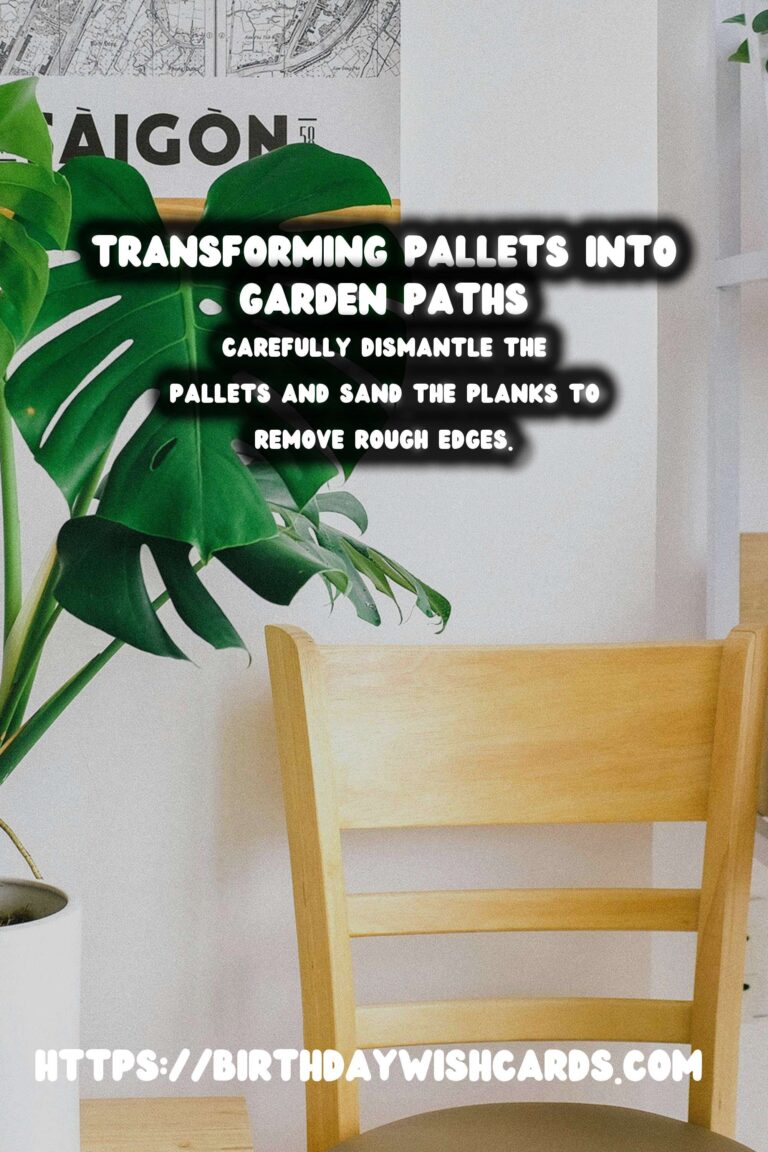
Recycling and repurposing old materials is not only environmentally friendly but also a cost-effective way to enhance your garden. One innovative approach is transforming old pallets into charming garden paths. This guide will walk you through the process, offering tips and tricks to ensure your DIY project is successful.
Why Use Pallets for Garden Paths?
Pallets are readily available and often free, making them an excellent resource for DIY projects. They are also durable and can withstand various weather conditions when properly treated. Using pallets for garden paths adds a rustic charm and a unique aesthetic to your outdoor space.
Gathering Materials and Tools
Before you begin, gather the necessary materials and tools. You will need:
- Old pallets
- Crowbar or hammer
- Saw (hand saw or power saw)
- Sandpaper or a sanding tool
- Wood sealant or outdoor paint
- Gravel or sand for the base
- Measuring tape
- Level
Ensure that the pallets you select are in good condition and free of any harmful chemicals.
Preparing the Pallets
First, dismantle the pallets using a crowbar or hammer. Carefully remove the nails and separate the planks. Once dismantled, cut the planks to your desired size based on the path’s width.
Next, sand the planks to remove any rough edges or splinters. This step is crucial for ensuring a smooth and safe walking surface. After sanding, apply a wood sealant or outdoor paint to protect the wood from moisture and insects.
Designing Your Garden Path
Plan the layout of your garden path. Consider the path’s location, length, and shape. Measure the area and mark it using stakes and string. Ensure the path is level for safety and aesthetic reasons.
Building the Base
Once the layout is marked, dig a shallow trench along the path. Fill the trench with gravel or sand to create a stable base. Use a level to ensure the base is even, which will help prevent shifting and settling over time.
Laying the Pallet Planks
Begin laying the prepared pallet planks along the path. Arrange them in your chosen pattern, such as straight lines or a herringbone pattern. Leave small gaps between the planks for drainage.
Once all the planks are laid, check the path’s level and adjust as necessary. Ensure the path is secure and stable before use.
Maintaining Your Garden Path
Regular maintenance will prolong the life of your pallet garden path. Periodically check for loose planks or nails and make repairs as needed. Reapply wood sealant or paint every couple of years to protect the wood.
Conclusion
Transforming old pallets into garden paths is a rewarding DIY project that enhances your garden’s appearance and functionality. With careful planning and execution, you can create a beautiful and durable path that reflects your style and commitment to sustainability.
Recycling and repurposing old materials is a cost-effective way to enhance your garden. Pallets are durable and can withstand various weather conditions when properly treated. Carefully dismantle the pallets and sand the planks to remove rough edges. Plan the layout of your garden path considering location, length, and shape. Regular maintenance will prolong the life of your pallet garden path.
#Gardening #DIY #Recycling #SustainableLiving #GardenDesign

